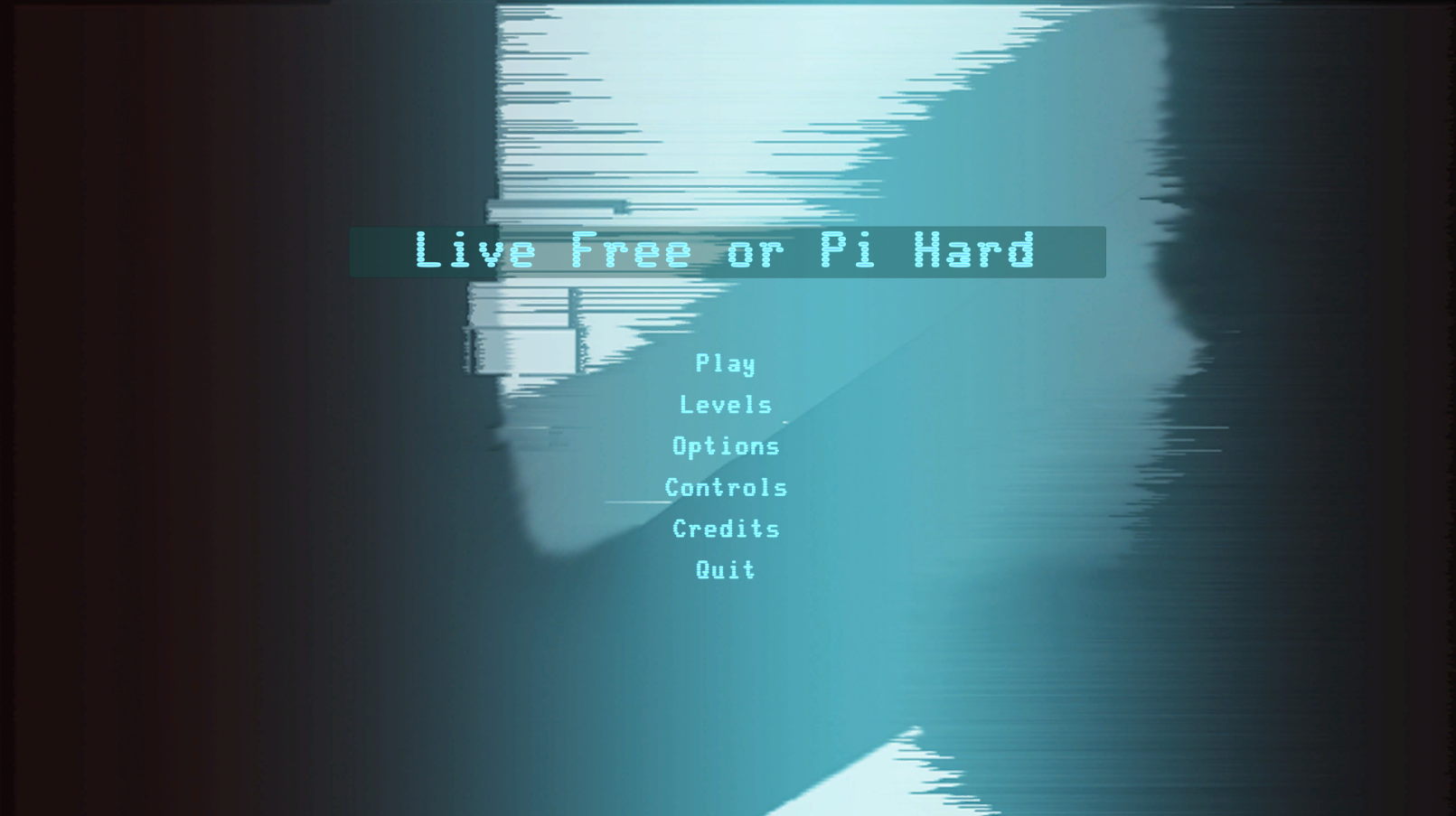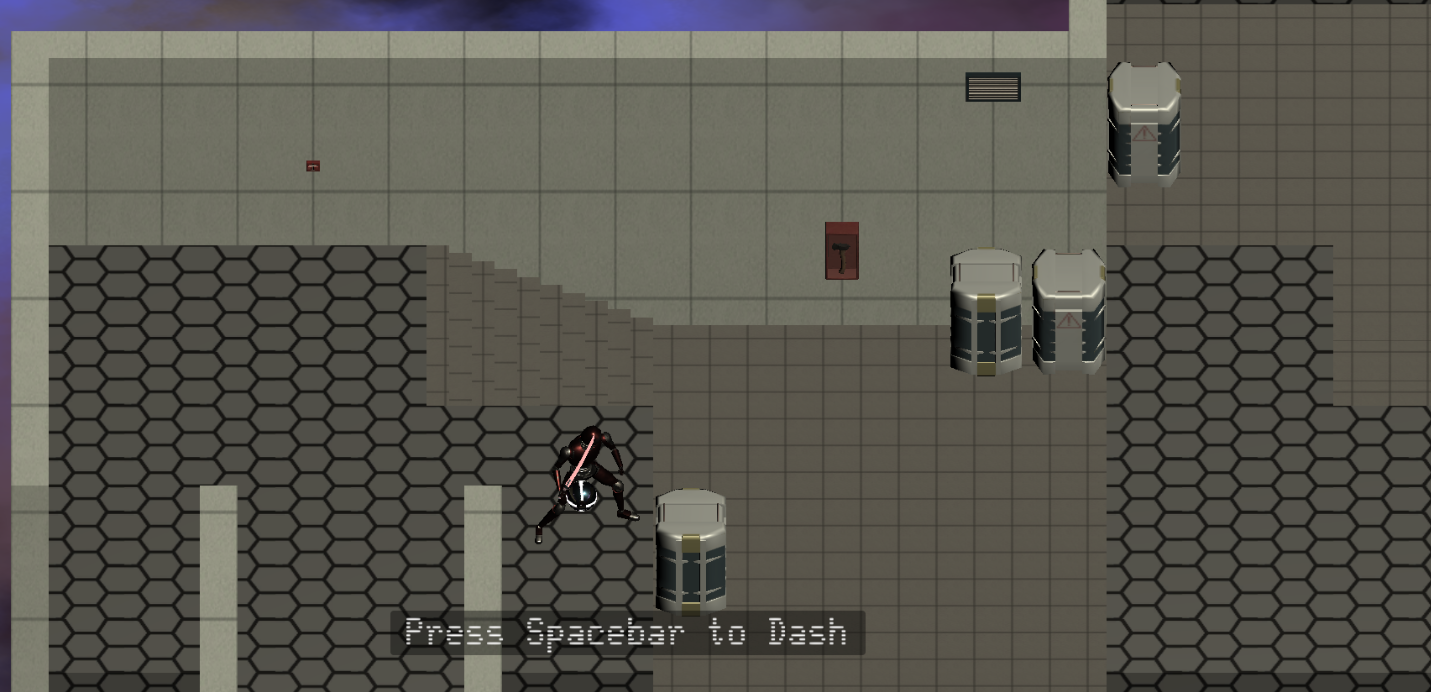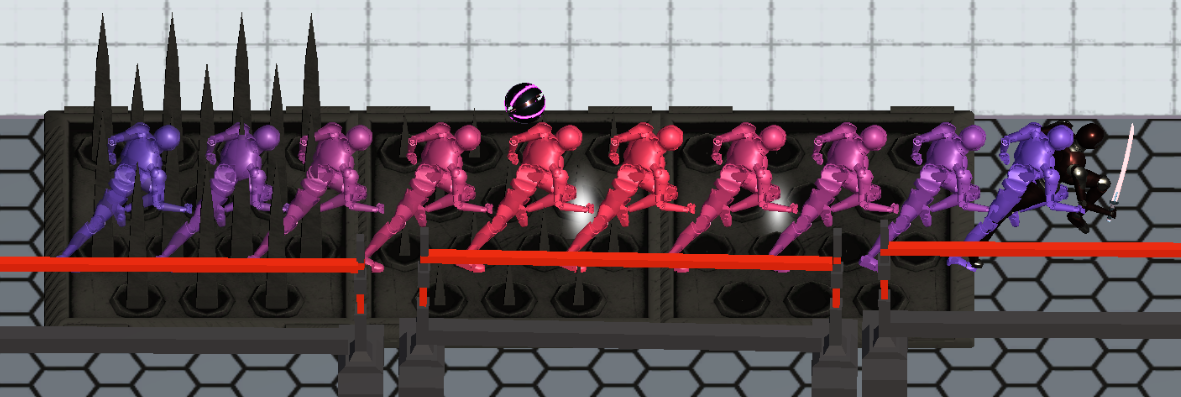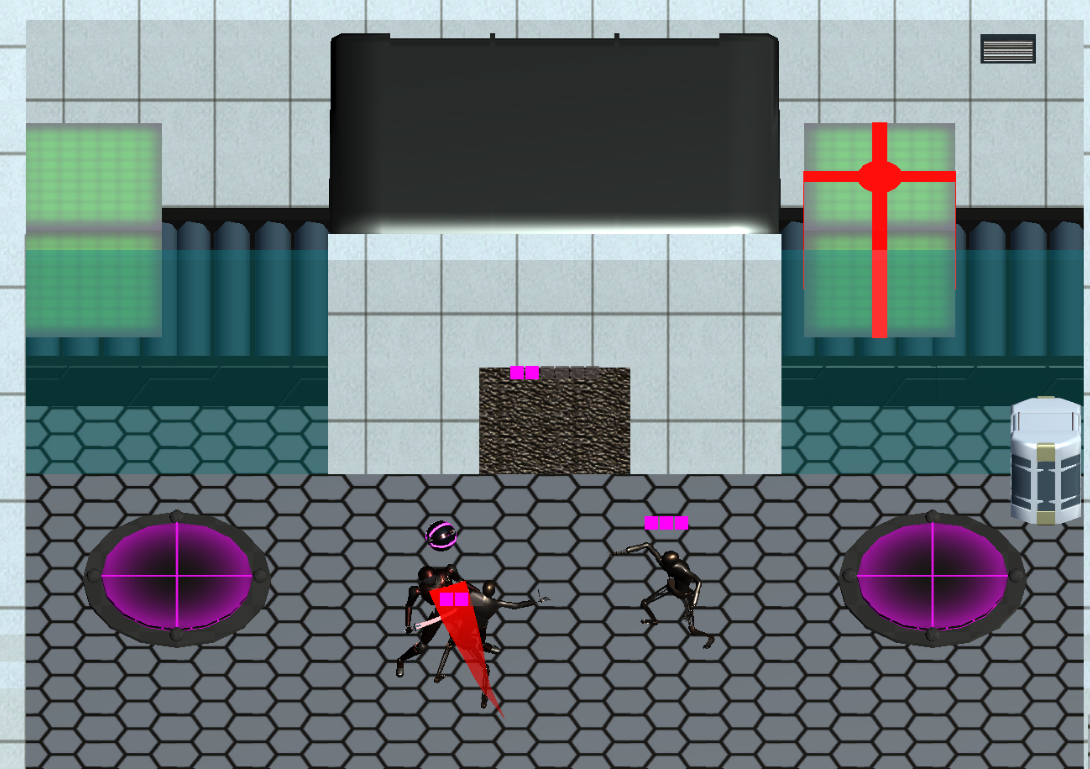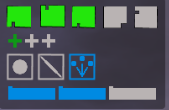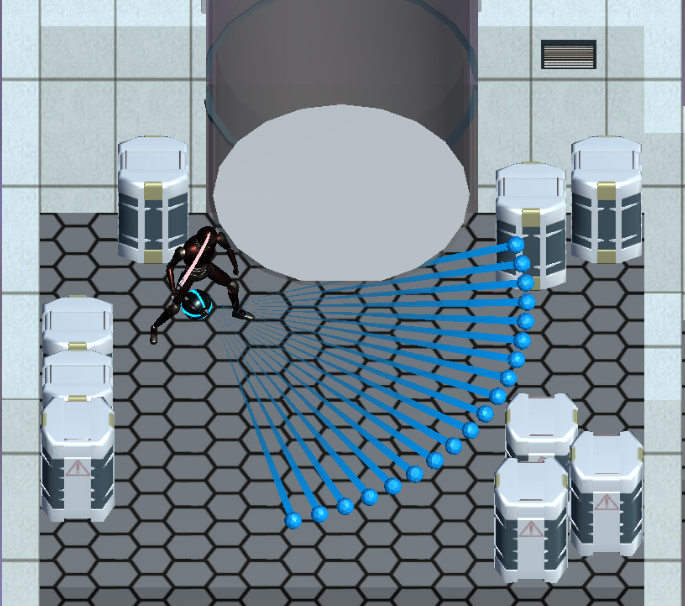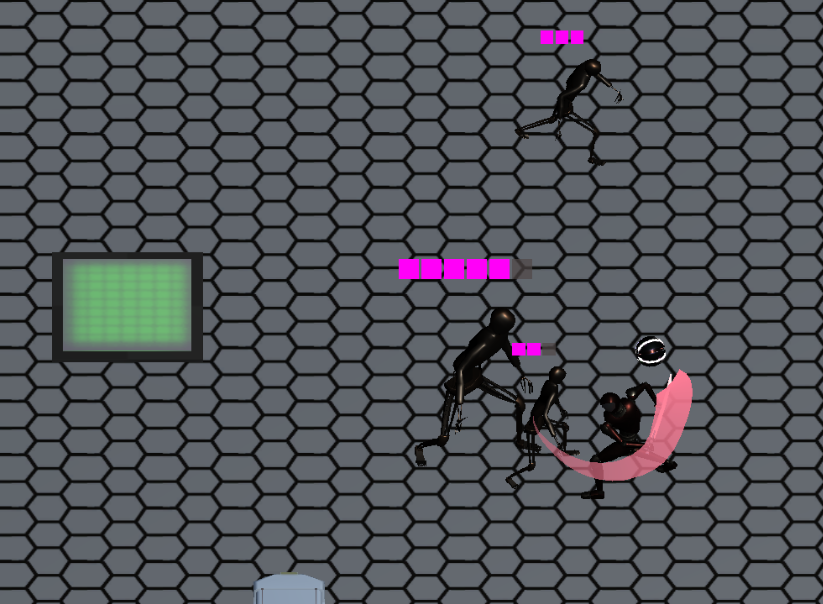Download Live Free or Pi Hard
Role
Team Lead, Lead Programming, Level Design (Tutorial Level, Explosives Level)
Project Duration
4 Months
Technologies Used
- Unity 2020
- ProBuilder, ProGrids, Cinemachine
- Visual Studio Community 2019
- Perforce
- Jira and Confluence
- Discord
Additional Attribution
- Design & Programming: Chasen Brewer, Kevin B. Coutcher Jr., Alexander Galbraith
- Art: Travis Bryant, Kelvin Castro, Joshua Donley
- Video Editing: Kevin B. Coutcher Jr.
A full reference list, including all sound and font sources, is available as part of the Release Notes on Itch.io.
Live Free or Pi Hard
This was the final capstone project that completed my time at Full Sail University. As a team of four designers, we were given four months to create a completed game from conception to release, with the opportunity to work with a team of 3D artists in the final month. Starting with a reference game was strongly encouraged, and so we chose to base our initial design off of Heart Machine's Hyper Light Drifter, which we felt would be an exciting but reasonably achievable challenge. Over the course of development, we found that our project morphed to include more puzzle-like elements than Hyper Light Drifter, which we tried to embrace in our level design. We also ultimately decided on a simple story in which you are an experimental combat robot, working together with a small drone to escape your creators and shut down the facility that created you.
I chose to step up as team lead for this project, which was a unique challenge for me. Leveraging my experience with programming allowed us to streamline some parts of the process and tackle challenges that may not have been viable otherwise. A good example of this streamlining would be our use of UnityEvents in order to create a system of reusable, mix-and-match interactive elements: for example, a switch prefab could easily trigger anything from a moving wall to a tutorial message to an enemy ambush, any of which could just as easily be initiated by a trigger volume, an enemy dying, or other events. Many of these components were implemented by my teammates, but I was able to save them a lot of work and encourage greater design flexibility with the idea to use UnityEvents. Of course, this project was also a major learning experience in many ways, including for me as a leader: our time here really hammered home the sheer amount of work that goes into even a relatively small video game, the difficulty of communicating intent across disciplines, and the importance of detailed but flexible planning in the preproduction phase. This was perhaps my biggest regret in retrospect: we did not spend enough time in the early stages of the project honing our vision for the game, what we wanted to achieve, or how we could reach those goals effectively, and this is something I hope to improve upon in future endeavors.
Beyond leading the team, I was responsible for two of our game's eight levels, including the initial tutorial level and a later level featuring explosives and the player triggering the collapse of the facility over the two levels that followed. I also implemented the core movement and combat systems for the player and enemies, which proved to be an interesting and educational undertaking. Combat was a challenge to implement due to its deep connection with animation, timing, and gamefeel; I still believe this is an area that could use further iteration and polish if more time were available, but overall I think it went well for my first attempt at such involved melee combat. Movement also briefly turned into a stumbling block due to our lack of planning and a misunderstanding of Unity's CharacterController component, and required a major overhaul in the middle of development to remedy over-dependency and unpredictable behaviors. This setback did however offer numerous valuable lessons, and ultimately led to a modular set of movement components that could be shared between the player, enemies, and even some props.
